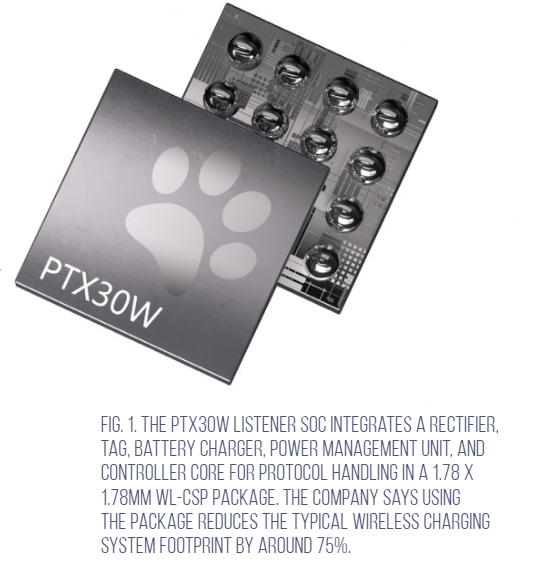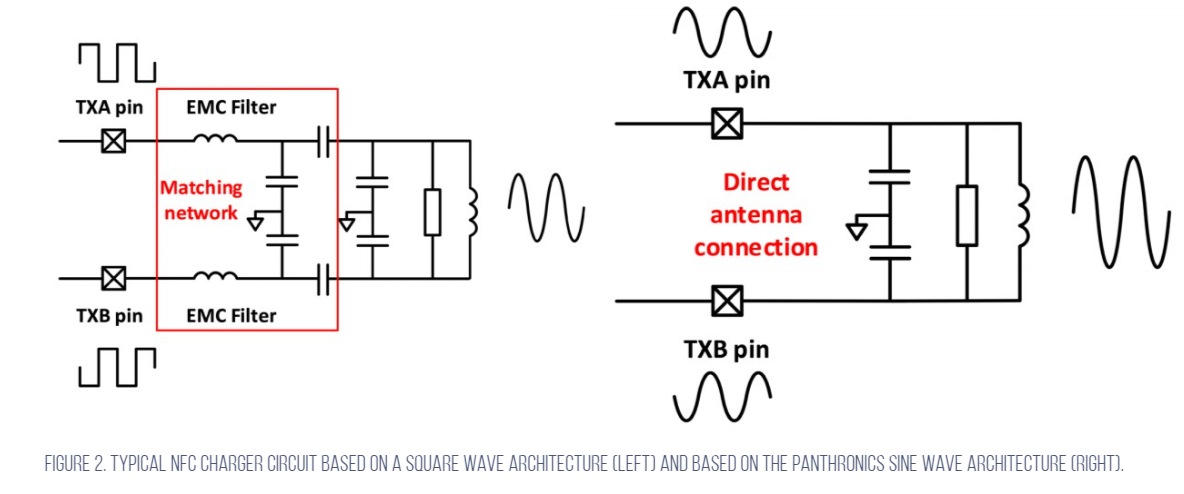Wearable devices take charge with NFC technology
For batteries smaller than 500mAh, NFC now provides a proven way to provide convenient, secure and fast charging, while enabling device manufacturers to enjoy the benefits of eliminating components to save space and reduce the bill of materials, says David Renno, product marketing manager, Panthronics.
This article originally appeared in the July'23 magazine issue of Electronic Specifier Design – see ES's Magazine Archives for more featured publications.
The need to accommodate a contacting connector interface to a battery can risk a wearable device’s mechanical integrity and impose constraints on design because there needs to be space for the receptacle its position dictates the routing of power and/or signal lines to and from the main circuit components, reducing PCB size and shape options.
Wireless charging allows the use of a sealed enclosure which is resistant to the ingress of contaminating grease, oil, dust or liquid and a reduced surface area which enhances the design of very small wearables, such as earbuds.
Short-range comms
NFC operates over a radio link using a base frequency of 13.56MHz, with a typical range of up to 100mm (60mm for payment terminals). The most common use case for NFC today is as a secure, low latency communications technology for contactless payments, access control, identification, authentication or device pairing. A reader broadcasts a modulated signal and when a tag is in range, it receives the signal and applies load modulation to it which is decoded by the reader.
In wireless charging mode, used to transfer up to 1W of power, the communication function is used to manage the power transfer between the power source or ‘poller’, and the power receiver, or ‘listener’. This mode is used to charge small devices with a battery capacity of up to 500mAh, such as hearing aids, smart rings, true wireless stereo earbuds, medical devices and smart glasses.
The poller supplies power to the antenna but also provides reader functionality to support data exchange with the listener. The listener is optimised for harvesting power transferred to its antenna but also includes tag functionality to allow for data exchange. The communications capability enables the system that charges a battery can also share information about its state of charge or fault status, upload data securely to the wearable device or the poller, perform device authentication before the poller’s configuration is modified and the ability to upload firmware updates to, or download firmware updates from, the poller.
One of the main advantages of NFC wireless charging is its small size. To harvest power efficiently via the antenna, the listener device implements a rectifier, an NFC tag to receive the poller’s NFC signals, a battery charger, system power management and a controller for NFC protocol handling. These functions may be implemented in the listener device with discrete components.
Comparison with Qi
The Qi wireless charging standard, specified by the Wireless Power Consortium, serves a higher power capability (5W to 15W) making it suitable for charging large batteries in devices, such as smartphones, and calls for a larger antenna than NFC requires. In addition, a Qi connection requires very precise alignment of the transmitter’s and receiver’s antennas, whereas NFC pollers and listeners can be used in smart glasses for example, and maintain efficient power transfer even with some antenna misalignment depending on how the arms of the glasses are folded.
In NFC wireless charging, a poller/reader device can provide dual-mode functionality via a single NFC antenna. This means, a wearable device could be configured to support contactless payments in card emulation mode and receive power in wireless charging mode via a single antenna – although not concurrently. This saves both space and component count.
Widespread adoption of the NFC standard means there are off-the-shelf NFC components available from many semiconductor manufacturers, ensuring seamless interoperability between readers and tags, or pollers and listeners, from different manufacturers.
Easing RF compliance
Panthronics uses the sine wave architecture implemented in silicon in poller devices in its PTX130W SoC (Figure 1), reader ICs for payment terminals and other communications applications. The sine wave architecture disposes of the lossy EMC filter circuitry required in conventional NFC controllers, which have a square-wave output signal (Figures 2a and 2b). The sine wave output produces reduced third harmonic emissions to simplify compliance with FCC and CE specifications.









